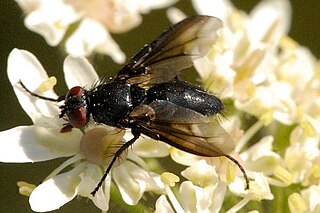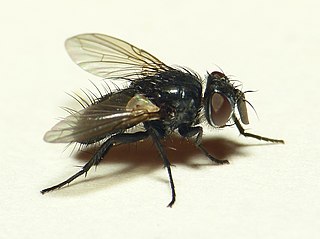Hypersara is a genus of parasitic flies in the family Tachinidae.
Chromatophania is a genus of flies in the family Tachinidae.
Erythrocera is a genus of flies in the family Tachinidae.
Eutrixopsis is a genus of flies in the family Tachinidae.
Paratrixa is a genus of flies in the family Tachinidae.
Rhinaplomyia is a genus of flies in the family Tachinidae.

Siphona is a genus of flies in the family Tachinidae.
Sumpigaster is a genus of flies in the family Tachinidae.
Thelairosoma is a genus of flies in the family Tachinidae.

Linnaemya is a genus of flies in the family Tachinidae.
Lubutana is a genus of parasitic flies in the family Tachinidae.

Voriini is a tribe of flies in the family Tachinidae. More junior homonyms exist of Wagneria than any other animal genus name.

Exoristinae is a subfamily of flies in the family Tachinidae. Most species are parasitoids of caterpillars.

Blondeliini is a tribe of parasitic flies in the family Tachinidae. Larvae are parasitoids of other insects, mostly beetles and caterpillars. Although nearly cosmopolitan, its greatest diversity is in the New World and especially in South America.

Eryciini is a tribe of flies in the family Tachinidae

Goniini is a tribe of parasitic flies in the family Tachinidae. Members of Goniini are distinguished from other Tachinidae by laying small "microtype" eggs that hatch only after being ingested by a host.

Tachininae is a subfamily of flies in the family Tachinidae.

Leskiini is a tribe of flies in the family Tachinidae.

Minthoini is a tribe of flies in the family Tachinidae.

Aphantorhaphopsis is a subgenus of flies in the family Tachinidae. Some consider this to be a subgenus of Siphona, most European workers seem content that this is a genus in its own right. They are known from the Palearctic, Afrotropical and Oriental regions.










